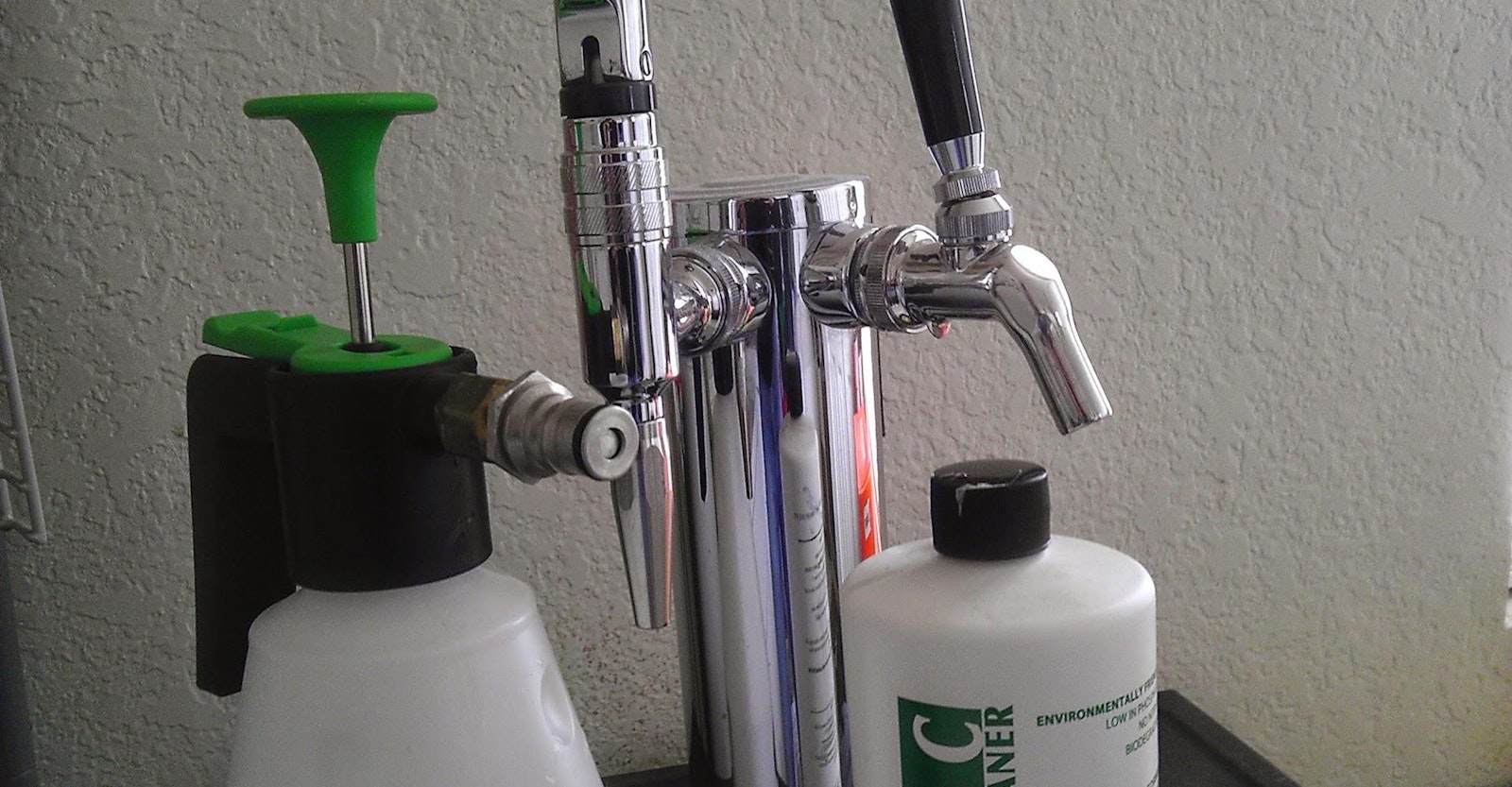We go to so much trouble to make our beer just right. From preparing healthy yeast starters and thoroughly sanitizing our equipment to using fresh hops and fermenting in a temperature-controlled environment, every step along the way is a chance to improve quality. So why, then, do so many of us get lazy about cleaning our draft lines?
I’m certainly guilty of it. While I can’t stand a sink full of unwashed dishes, I seem to have no issue neglecting my kegerator after the keg kicks. But lines are easy to clean, and there’s no reason to not just do it right away. So do as I say and not as I do, and clean your draft lines!
Why Clean Your Lines?
There’s the obvious task of flushing the old beer out of the line to make way for the new stuff. Not to mention that homebrew is unfiltered, which means brewer’s yeast works its way through the system. Those first and last pints, in particular, are usually full of the stuff. Mold, bacteria, and wild yeasts can also find their way in, even if your sanitation practices are up to snuff. But there’s another good reason to maintain clean draft lines.
Over time, disconnects, beverage lines, and faucets can accumulate a layer of calcium oxalate, more commonly called beer stone. Think of it as the plaque that collects in your arteries after a night of washing your beer down with bacon-wrapped everything. Beer stone harbors and nurtures spoiling bacteria, and it can create tiny nucleation sites that promote gushing and poor head retention. In severe cases, you may even get white floaters in your beer.
How to Clean the Lines
Professional bars recirculate a cleaning solution through each beer line for several minutes, but this is impractical for most hobbyists. And, thankfully, it’s usually unnecessary. Recirculation is certainly beneficial for long-draw systems in which beer travels 20 feet (6 meters) or more from keg to faucet, but most home draft lines are 10 feet (3 meters) or shorter. For the home enthusiast, a simple soak and rinse should be sufficient. The general method is pretty straightforward.
- Run a cleaning solution through the draft line under pressure until the flow runs clear.
- Wait while the solution soaks in the lines. I usually go for 15 minutes.
- Run clean water through the draft line under pressure to flush out the cleaner.
- Tap the next keg.
- Open the faucet and let it run until beer comes out.
- Pour your first pint from the new keg.
You don’t even need any special equipment to get started. Prepare your cleaner solution in an empty keg, pressurize it with carbon dioxide, and push it through the line just as you would beer. Then repeat using a keg of plain water. You don’t need to use full kegs. Just a couple of quarts is really all that’s needed.
All of this pressurizing, though, is a waste of carbon dioxide, so consider building or purchasing a special hand pump-based line cleaner. These are available from retailers, or you can build your own from a hand pump paint sprayer, a spare corny keg liquid post, and a coupler that adapts the pump’s outer thread to the post’s inner thread. Whether you build your own or buy a ready-made product, these simple devices hold a quart or two (1–2 liters) of fluid, and you supply the pressure with a few strokes of the piston. You’ll save carbon dioxide and water.
As for the cleaner you choose, OxiClean works well as long as you don’t allow the lines to sit empty between kegs. If you plan to tap a new keg right after emptying the old one, then flushing with OxiClean and rinsing with hot water is probably sufficient. OxiClean won’t remove beer stone, though, so for more thorough cleanings, consider a product such as BLC Beer Line Cleaner. It’s safe for your equipment but has the added oomph to remove beer stone.
Finally, don’t forget that beer lines should be replaced periodically. The more beer you brew and drink, the more frequently you should replace your lines: Once a year is fine for most of us, more often for chuggers, and less often for sippers.

